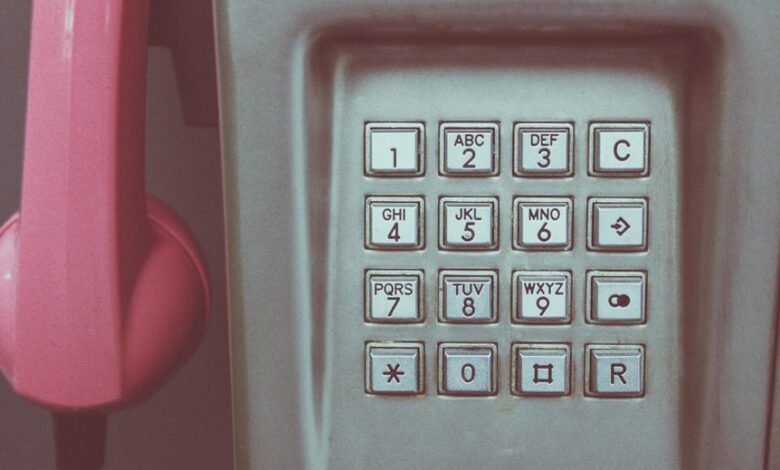Check Who Called From These Numbers: 2042897277, 2042897313, 2042897376, 2042897546, 2044803976, 2044805589

The numbers 2042897277, 2042897313, 2042897376, 2042897546, 2044803976, and 2044805589 have raised concerns among recipients in Manitoba. These calls may be linked to telemarketing or potential scams. Understanding their origins is crucial for consumer protection. Identifying these callers can shed light on their intentions. However, the implications of not investigating further could be significant. What steps should be taken to ensure safety from such communications?
Understanding the Area Code 204
Area Code 204 serves as a critical identifier for telephone numbers within the province of Manitoba, Canada. Established in 1947, its area code history reflects a response to growing communication needs.
This code holds regional significance, encompassing urban and rural areas, facilitating connectivity. Understanding its role enhances awareness of local telecommunications and fosters a sense of freedom in communication across diverse Manitoban communities.
Common Reasons for Receiving Unknown Calls
Unknown calls often stem from telemarketing efforts aimed at promoting products or services.
Additionally, the rise in scams and fraudulent schemes has led to an increase in unsolicited calls designed to deceive recipients.
Understanding these common sources can help individuals better manage their communication and avoid potential pitfalls.
Telemarketing and Promotions
Telemarketing calls represent a significant source of unknown numbers that individuals frequently encounter.
These calls often utilize aggressive telemarketing tactics aimed at selling products or services. Promotional strategies are designed to capture interest quickly, using limited-time offers or discounts.
As consumers seek personal autonomy, understanding these tactics empowers them to make informed decisions about whether to engage with such unsolicited communications.
Scams and Fraud Alerts
Many individuals who receive unsolicited calls may also encounter scams and fraudulent schemes disguised as legitimate communications.
These calls often employ techniques like spoofing to appear trustworthy. Utilizing caller ID apps and phone number verification can aid in identifying potential threats.
Awareness of common scams can empower individuals to protect their privacy and avoid financial loss from deceptive practices that target unsuspecting recipients.
How to Identify the Caller
Although identifying a caller can often seem daunting, several effective methods exist to determine the source of an incoming call.
Utilizing caller ID can provide immediate information about the number’s origin. Additionally, a reverse lookup service can further clarify the caller’s identity by accessing databases linked to phone numbers.
These tools empower individuals to make informed decisions regarding unknown calls.
Reporting Suspicious Numbers
The identification of suspicious numbers often hinges on recognizing specific scam indicators, such as unsolicited requests for personal information or urgency in messaging.
Once these indicators are established, reporting such numbers to the appropriate authorities becomes crucial in mitigating broader risks.
Effective reporting not only aids in personal protection but also contributes to collective efforts in combating fraud.
Recognizing Scam Indicators
When analyzing incoming calls, certain indicators can reveal whether a number is associated with a scam.
Key warning signs include high-pressure tactics, unsolicited offers, and requests for personal information, which exploit scam psychology.
Additionally, unfamiliar area codes and caller ID discrepancies can signal fraudulent intent.
Awareness of these indicators empowers individuals to discern legitimate calls from potential scams, preserving their autonomy and security.
Reporting to Authorities
Reporting suspicious numbers to authorities is a critical step in combating fraud and protecting personal information.
Adhering to authority guidelines ensures effective call reporting.
- Document the call details
- Identify the number’s origin
- Report to relevant agencies
- Utilize online reporting tools
- Educate others on potential scams
These actions contribute to a collective effort in maintaining personal security and deterring fraudulent activities.
Tips for Protecting Yourself From Scams
Numerous individuals fall victim to scams each year, underscoring the need for effective protective measures.
Enhancing scam awareness is crucial for personal safety. Individuals should verify caller identities before sharing information, utilize call-blocking technologies, and educate themselves on common scams.
Additionally, maintaining skepticism towards unsolicited communications fosters a proactive approach, ultimately minimizing vulnerability and empowering individuals to safeguard their personal data effectively.
Additional Resources for Caller Identification
Caller identification has become increasingly essential in a world where unsolicited calls are prevalent. Effective caller ID and lookup services can empower individuals to discern legitimate calls from potential scams.
- Online reverse phone lookup tools
- Mobile apps for caller identification
- Community-driven reporting platforms
- Telemarketing blacklist databases
- Government resources for scam reporting
Utilizing these resources enhances personal security and promotes informed decision-making.
Conclusion
In conclusion, careful consideration of calls from the specified numbers can safeguard individuals from potential scams. By utilizing diligent detective work—such as employing caller ID and reverse lookup tools—consumers can ascertain authenticity and avoid unwanted disturbances. Reporting rogue numbers not only protects personal privacy but also fosters a safer community. Ultimately, remaining alert and informed is imperative in the ongoing battle against telemarketing tactics and fraudulent communications in Manitoba.




